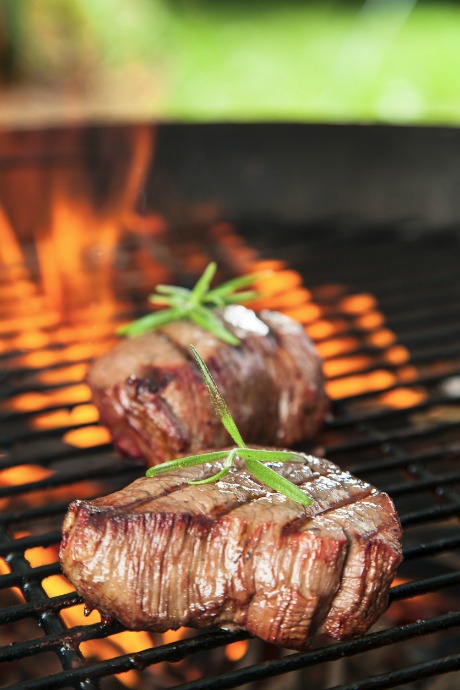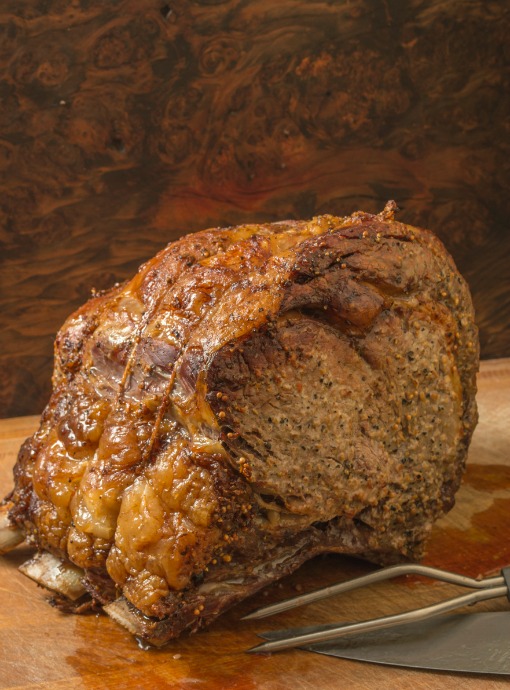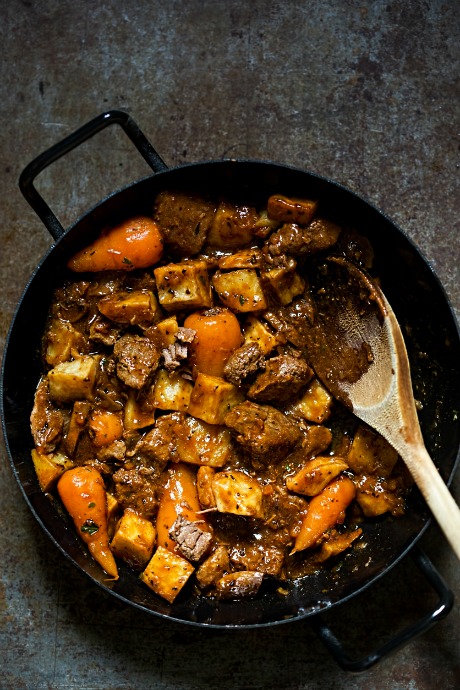Ask the Experts: Cooking Cuts of Beef
Posted by April on Aug 2nd 2017
Q: Now that I know the difference between various cuts of beef, what are the best ways to cook each cut?
A: Even though some cuts of beef can be rather expensive, less expensive cuts can be delicious when cooked properly. Likewise, if you spring for tenderloin or NY Strip, you'll want to be sure you cook it to perfection. Any cut of beef can be flavorful and tender, provided you use the correct cooking method.
Dry Heat vs. Wet Heat
There are two main cooking methods used when cooking beef: dry heat and wet heat.
Dry heat cooks meat by transferring heat through air or oil. Dry heat cooking methods include grilling, baking, frying in oil, or broiling.

Wet heat cooks meat by transferring heat through liquid, such as water or broth. The two main wet heat cooking methods are braising and stewing.
Some recipes use both dry and wet heat methods to maximize flavor. For instance, a recipe may instruct the cook to sear meat in hot oil before braising it in a covered pan.
Cuts of Beef for Dry Heat Cooking
Cuts of beef that are already naturally tender will do better with a dry heat cooking method. If you try to grill, roast, or broil a tougher cut of meat like brisket or chuck, you might feel like you’re serving shoe leather for dinner.
However, certain cuts can be grilled, roasted, or broiled if you take the time to marinate the meat. Marinate eye of round steaks, eye of round roasts, chuck eye steaks, London broil, and top blade steaks for at least two hours before cooking with a dry heat method. These tips from Epicurious can help you put together a marinade even without a recipe.

If you’re cooking without a marinade, you should choose cuts of meat from the rib and short loin. Although these cuts are tender, you should still take care when grilling, roasting, or broiling them. Overcooking will leave them tough and dry.
No matter what dry heat method you choose, use a meat thermometer to check doneness. For rare beef, aim for 140°F in the center. For medium-rare, cook to 145°F, and for medium, cook to 160°F. Cook to 170°F for well done beef.
Cuts of Beef for Wet Heat Cooking
When you take a tough cut of meat and cook it for a long time in liquid at a low temperature, magical things happen. The connective tissue softens and breaks down. The fat melts and is distributed throughout the meat, spreading flavor and moisture. Meat becomes melt-in-your-mouth tender and delicious.

Wet heat cooking methods include stewing and braising. You can cook with simply water, but a bit of broth or gravy will add to the flavor. You can sear cuts of beef before braising or stewing to add texture and flavor too. When cooking, use at least a half cup of liquid, but check occasionally to ensure the liquid hasn’t completely evaporated. Cover tightly and simmer it on top of the stove or at low heat in the oven
One nice thing about cooking beef with wet heat is that you can enjoy beef even on a tight budget. Cuts of beef that are well-suited to wet heat are much less expensive than those that are better when cooked with dry heat. Try cuts like chuck steaks and roasts, blade steak, round steak and roasts, eye of round steak, brisket, short ribs, and round tip steak.
Whether you choose tender cuts for grilling or more budget-friendly cuts for braising, we hope this two-part series helps you enjoy beef more often.
As an avid farmer, gardener, and cook, April Freeman is an expert in the food production process. She raises pigs, chickens, beef cattle, and grows a wide variety of vegetables and fruits on her family farm in Tennessee. Learn more about April’s firsthand experience with farm-fresh food on her blog, Feeding My Family.

